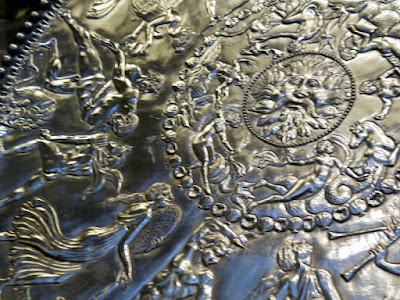It's also free - booyah!
I've been twice, but I feel the same thing every time: overwhelmed to the point of apathy. There are rooms upon rooms of ancient sculptures, vases, carvings - and it all becomes a bit too much to handle. However, there are a few things that stand out, mostly...
Friends, that's the Rosetta Stone. THE Rosetta Stone. Incredible. And I think you can see the amazing amount of people in the reflection who come to see the Rosetta Stone.
There's also a very large room (half of which is pictured below) that houses a large amount of friezes and statues from the Parthenon in Greece. Pretty cool. I've always been fascinated by Ancient Greece, so you would think that you'd have to drag me out of these rooms. But as I said, I sort of didn't care anymore because there was just so much.
Bits of the Parthenon
The trouble for me was that all these amazing artifacts were delicately placed in an orderly fashion... but with no story or narrative to follow. I think the great potential of museums is the power to take you through a narrative, and, for good or bad, tell you the story of history. The Museum of London did a really great job of this. On the other hand, the British Museum would have to pack away many of its treasures in order to create this effect. And really, no one wants to be there on the day when the Rosetta Stone isn't on display. So I guess there's room for different types of museums.









No comments:
Post a Comment